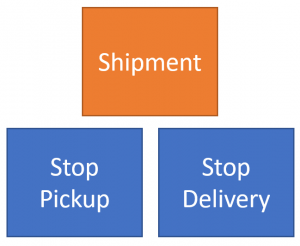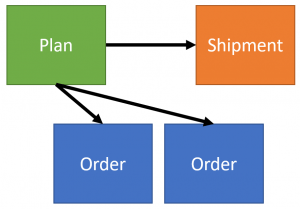Sponsor: Using RabbitMQ or Azure Service Bus in your .NET systems? Well, you could just use their SDKs and roll your own serialization, routing, outbox, retries, and telemetry. I mean, seriously, how hard could it be?
Always having your Domain Model in a valid state means it will be predictable. You’ll write less defensive code or conditional code because your domain objects will always be in a valid state. Using aggregates is a great way to encapsulate the state with behavior to keep the state valid. Using factories to create your aggregates is key to having a valid state from the very beginning. Here’s how you can create an always valid domain model.
YouTube
Check out my YouTube channel where I post all kinds of content that accompanies my posts including this video showing everything that is in this post.
Aggregate
First, let’s start with defining our Aggregate as it ultimately is what will keep a valid domain model.
The example I’m going to use in this post is of a Shipment. You could think of a Shipment in the sense of Food Delivery service where you’re ordering food from the restaurant and it gets delivered to your home.
The aggregate in this scenario consists of a Shipment and two Stops. There is a Pickup Stop, which is the restaurant where the shipment starts from, and a Delivery stop which is your home where the Shipment ends. The Aggregate Root is the Shipment.
One important aspect of this is that each stop needs to follow a progression. The initial state of a Stop is “In Transit”, then goes to “Arrived” once the delivery driver arrives at the location of the stop (either the restaurant or your home) and then finally goes to the “Departed” state when the delivery driver leaves the stop.
Another rule is that this progression must be done for the Pickup Stop first, in its entirety before the Delivery Stop can start its progression. This makes sense because you need to arrive at the restaurant to pick up the food, leave the restaurant, arrive at the house for delivery, then leave the house.
Invariants
Based on the simplistic example above, our invariants are:
- Shipment must have at least 2 stops
- The First stop must be a Pickup
- The Last Stop must be a Delivery
- Stops must progress in order
The first three invariants must be established upon trying to create the Aggregate. The final invariant is controlled within the aggregate. In order to always be in a valid state, we must only allow the creation of a valid Aggregate that satisfies the invariants defined above. And once we have our Aggregate, we must only allow valid state transitions.
Enforcing these invariants is what will keep a valid domain model.
Factory
In order to create our Aggregate in a valid state right from the get-go, we can use a Factory. In the example below, I have a private constructor but expose two different static factory methods that force us into a good state. These factories are enforcing the first three invariants.
The Arrive() method is enforcing the last invariant that we must progress our stops in the correct order. Finally, here are the Stops (Pickup, Delivery) that enforce they transition themselves in the correct order.
Draft Mode
Often a scenario is what I call a “Draft Mode” where the invariants aren’t applicable, yet. In other words, they want to create a model that has much looser constraints.
To illustrate this with my Shipment example, you may have multiple Orders to a single Restaurant that ultimately will be placed all on the same Shipment.
In this case, the Shipment still has all the invariants but what we likely want is to have our Shipment created from a Plan. The concept of a Plan is to associate multiple orders and then generate a Shipment from them. This means we’re creating an Aggregate from another Aggregate.
ALWAYS Valid Domain Model
Having your domain model always in a valid state, right from the beginning means you’ll have to write less defensive code because you absolutely know the data is in a valid state. In my example, there will always be at least 2 stops, the first will be a Pickup, the last will be a Delivery. All stops will go through a progression, in order.
The factory is what sets everything up in a valid state and the Aggregate keeps us in a valid state.
Source Code
Developer-level members of my CodeOpinion YouTube channel get access to the full source for any working demo application that I post on my blog or YouTube. Check out the membership for more info.


